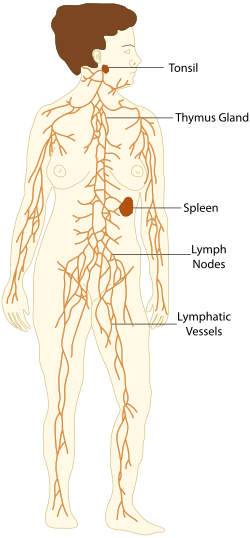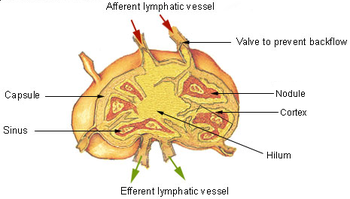ASSALAMMUALAIKUM..
SALAM UKHWAH & SALAM DRi SEORNG JOHOREAN!!
yihaaaaa!!!
ahhahah (awat e-ra semangat sgt ni??)
ok cek nk story mory dlu..
td mse kt skolh.mse subject biology..
e-ra de blja mngenai LYMPHATIC SYSTEMS..
& ckg biology e-ra y cute lagi kacak bergaya..
PUAN NUR ZAHURA HARIS ABIDIN <---- click jika mahu ke blog beliau..
ade suruh kami (student 5 um) serch pasal lymphatic system..(supaya lebih phm)
soo dah alng2 e-ra serch ni..e-ra nk kongsi la pngetahuan e-ra sket psl lyhmphatic system..
sooo (brape byk soo da) special tok ari ini..
E-RA PASHA YG AKN AJA KAMOO PSL LYMPHATIC SYSTEM!!
(yeaa!! clap ur hand plez..)
ok3..tarik nafas!!!! lepasss..
ok we start our lesson 4 today..
2 all my belove student plez open ur BIOLOGY BOOK..(form 5)
(ahahha perasan nk jd ckg)
ok guyz what's the real meaning about LYMPHATIC SYSTEMS??
did u know??
(hahah gelak guling2)
ok3..let me introduce 2 u ollz..
what's the REAL meaning about lymphatic system..
The blood does not directly come in contact with the parenchymal cells and tissues in the body, but constituents of the blood first exit the microvascular exchange blood vessels to become interstitial fluid, which comes into contact with the parenchymal cells of the body. Lymph is the fluid that is formed when interstitial fluid enters the initial lymphatic vessels of the lymphatic system. The lymph is then moved along the lymphatic vessel network by either intrinsic contractions of the lymphatic vessels or by extrinsic compression of the lymphatic vessels via external tissue forces (e.g. the contractions of skeletal muscles).
ok..now..
what's the function of lymphatic systems??
The lymphatic system has multiple interrelated functions:[3]- it is responsible for the removal of interstitial fluid from tissues
- it absorbs and transports fatty acids and fats as chyle to the circulatory system
- it transports immune cells to and from the lymph nodes in to the bones
- The lymph transports antigen-presenting cells (APCs), such as dendritic cells, to the lymph nodes where an immune response is stimulated.
did u allz knws about LYMPH NODE??
yeaahh!!!
relax bro,sis..
sloww2..let me explain it 2 u..
The substance of a lymph node consists of lymphoid follicles in the outer portion called the "cortex", which contains the lymphoid follicles, and an inner portion called "medulla", which is surrounded by the cortex on all sides except for a portion known as the "hilum". The hilum presents as a depression on the surface of the lymph node, which makes the otherwise spherical or ovoid lymph node bean-shaped. The efferent lymph vessel directly emerges from the lymph node here. The arteries and veins supplying the lymph node with blood enter and exit through the hilum.
Lymph follicles are a dense collection of lymphocytes, the number, size and configuration of which change in accordance with the functional state of the lymph node. For example, the follicles expand significantly upon encountering a foreign antigen. The selection of B cells occurs in the germinal center of the lymph nodes.
Lymph nodes are particularly numerous in the mediastinum in the chest, neck, pelvis, axilla (armpit), inguinal (groin) region, and in association with the blood vessels of the intestines.
ahaa!!!!! ok..n what the Diseases of the lymphatic system????
Some common causes of swollen lymph nodes include infections, infectious mononucleosis, and cancer, e.g. Hodgkin's and non-Hodgkin lymphoma, and metastasis of cancerous cells via the lymphatic system. In elephantiasis, infection of the lymphatic vessels cause a thickening of the skin and enlargement of underlying tissues, especially in the legs and genitals. It is most commonly caused by a parasitic disease known as lymphatic filariasis. Lymphangiosarcoma is a malignant soft tissue tumor, whereas lymphangioma is a benign tumor occurring frequently in association with Turner syndrome. Lymphangioleiomyomatosis is a benign tumor of the smooth muscles of the lymphatics that occurs in the lungs.
uhukkkk3..
ok guyz!!!
i thnk it's enough 4 u today..
see u on next lesson..
thank u..
(BERTUKAR!!!)
ahahaha k3.. e-ra dh btukar jd seorng PELAJAR BIOLOGY smula k..
adehhh..
bez jgk jd ckg ni ye..
rupenye ni rse ckg zahura mse aja e-ra nn mmbe2 e-ra..
ahahaha..
ok la..nk wat homework BIOLOGY dlu ye..
to ckg zahura-->>(err~ e-ra nk wt omwk dlu..actually lom siap note y tok form 5..heheh bru wt ckit..tp t naik holiday kompom 100% dah ciap..=D)



























5 000 orang nak tahu rahsie e-ra:
Best woo jadi cikgu~~ Hehe :D
Detail bangat, tp good job!! Konsep dia simple je, senang sangat.. Harap2 dah lebih faham la ek cikgu E-ra?
Semoga mencapai kecemerlangan dlm semua subjek yg diambil..
Google la sejarah plaks... :D
bez?? almak rsenye sy x d bakat la nk jd ckg.ahaakk =D
alhamdulillah..hope akn lbh phm lg..hehe
AMIN..9A+ pnye!!
sjrh???? err~ err~ ahaha..insyallah..
perghhh.imbas kembali sewaktu zaman skolah ni. :)
rindunye nk beljr sbjek biologi ni =D
dah byk lupe info dlm bio ni
thanks taw ^_^
t'lampau byk laa era..
lymphatic system xde laa kena byk ingat sgt..INHERITANCE LAGI BEST!! x sabar nak belajar..^___^
cikgu Zahura.. sy dak bio f5 gak.. bg laa tips2 bio klu adaaa...
sejarah,agama and bio same je cara blaajaaa nye
\
Gud LuCK :)